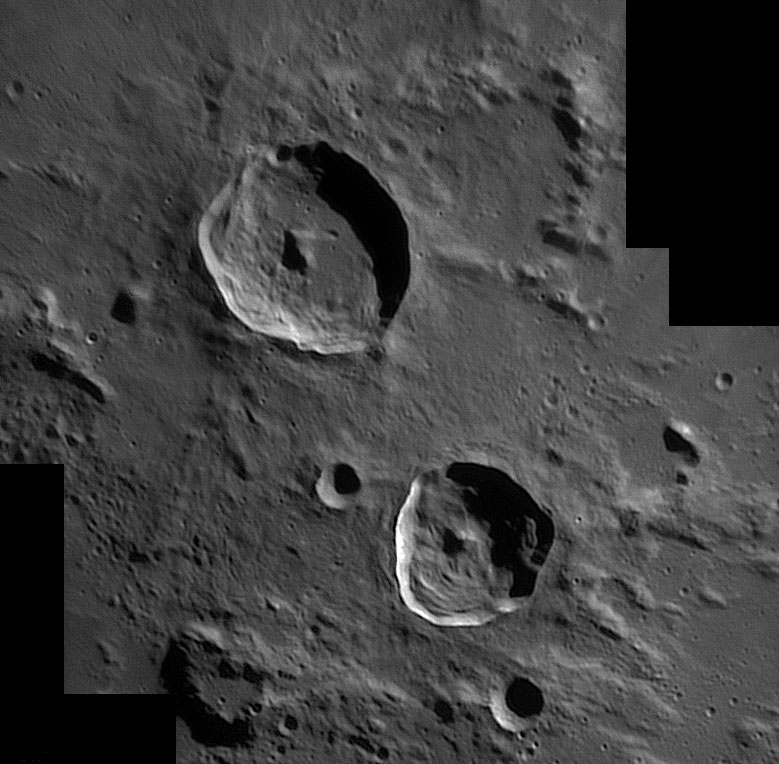Difference between revisions of "June 2, 2011"
| (One intermediate revision by the same user not shown) | |||
| Line 14: | Line 14: | ||
<br /> | <br /> | ||
<strong>Related Links</strong><br /> | <strong>Related Links</strong><br /> | ||
| − | Rükl plate [ | + | Rükl plate [https://the-moon.us/wiki/R%C3%BCkl_34 34]<br /> |
Damian's [http://www.damianpeach.com/ website]<br /> | Damian's [http://www.damianpeach.com/ website]<br /> | ||
<br /> | <br /> | ||
Latest revision as of 17:50, 13 October 2018
Laurel And Hardy, Too

image by Damian Peach, U.K.
Atlas and Hercules, Bonnie and Clyde, Godin and Agrippa - some things just naturally seem to go together. These two craters are somewhat similar, as are most craters of similar size and relative age. Godin is 34 km in diameter and has walls with terraces cascading onto the floor. These terraces are from an enlargement of the wall called a scallop. The high Sun Godin has a bright rim and hints of residual rays. Agrippa is 10 km larger and is older. Its rim is not as bright, and it has a sizable crater breaking its rim, and four or five smaller craters on its floor. The east side of the floor is flat, as if filled with old impact melt or perhaps basin ejecta - except it is younger than Imbrium and other basins. Finally, the shadow-casting plateau at bottom left is reminiscent of Mount Penck.
Chuck Wood
Technical Details
May 10, 2011, 1959UT. Celestron C14.
Related Links
Rükl plate 34
Damian's website
Yesterday's LPOD: Color Clues
Tomorrow's LPOD: Ups And Downs but Are They Sound?
COMMENTS?
Register, Log in, and join in the comments.



